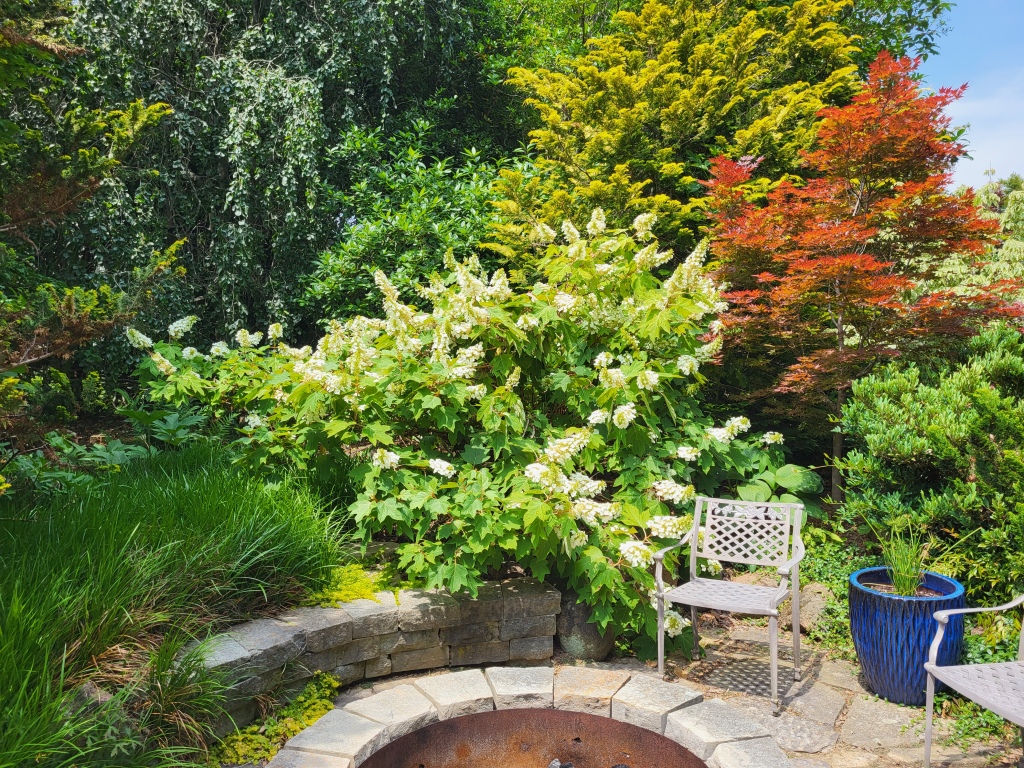Again this year, the yellow-leafed ‘Little Honey’ hydrangea (Hydrangea quercifolia ‘Little Honey’, below) will not flower. Several years ago, it was moved from a sunnier spot where its leaves grew smaller, with brown edges, to this more shaded location where it grows splendidly near two oakleafs that flower, though more sparsely than others in more sun.

Undoubtedly, the quest to find ideal places for each of the garden’s plants will never end, but the yellow foliage brightens this shaded path, so the irregular flowering will be accepted. Other oakleaf hydrangeas make a glorious show in early summer.

The garden’s collection of hydrangeas is a tiny fraction of ones available with no plans for expansion, though I will continue to replace bigleaf varieties (Hydrangea macrophylla, above) that flower only on last year’s growth that is regularly winter damaged. One long-established hydrangea that rarely flowered was dug out and discarded earlier this spring, replaced with a lace cap (below) that flowers on old and new growth (remontant). Two other hydrangeas will eventually be replaced with alternatives that flower reliably.

While neither native nor non-native hydrangea are exceptional for pollinators, the varying degrees of showy, sterile, and tiny, fertile flowers are fascinating. Fertile flowers are rarely evident on mophead types, but they are abundantly displayed on lacecap and oakleaf hydrangeas.




Good morning Dave. I’m confused by your statement: “While not an exceptional pollinator shrub, this oakleaf hydrangea is covered by a variety of bees that readily locate its fertile flowers beneath the showy sterile blooms.” Are those thready-looking things the ‘fertile flowers’?? Thanks! (Also, p.s. – I just saw a post on a list serve in Mont Co, MD that someone is giving away some koi. If you are interested I can connect you to that person.)
Oakleaf hydrangeas are better for pollinators than other hydrangeas, but none are pollinator favorites. The fertile flowers are thread-like on the oakleafs. With recent problems with an otter I’m not looking to add to my koi, but thank anyway.